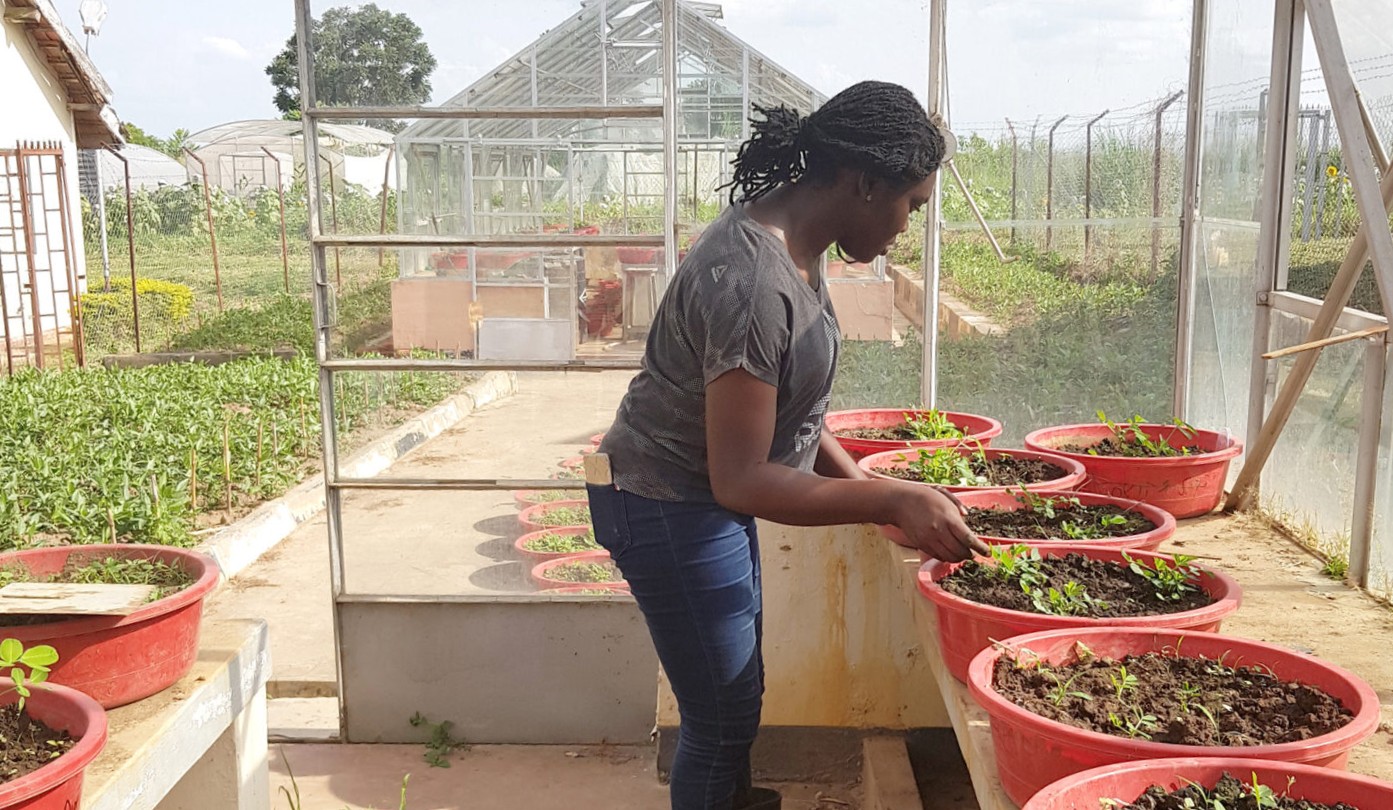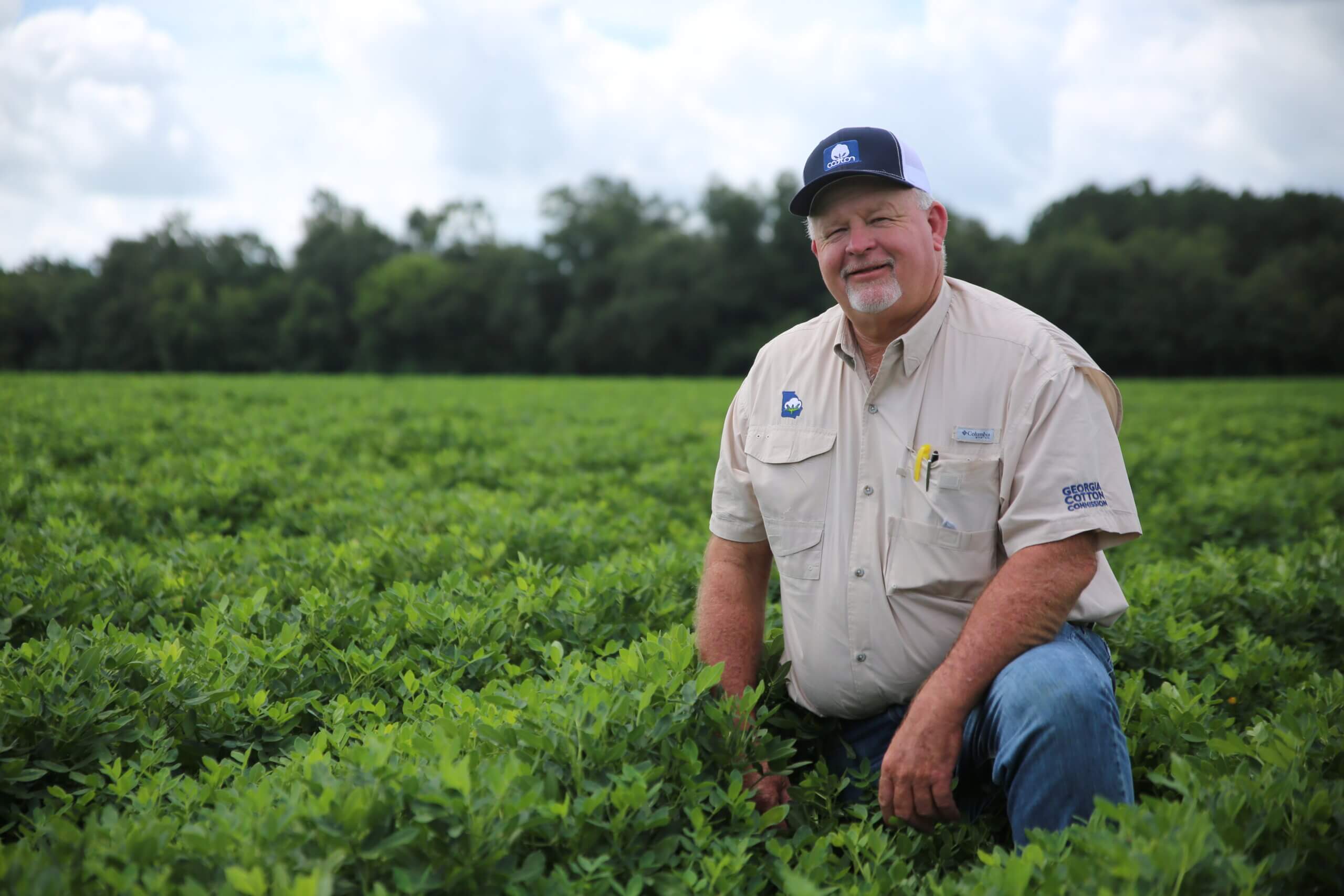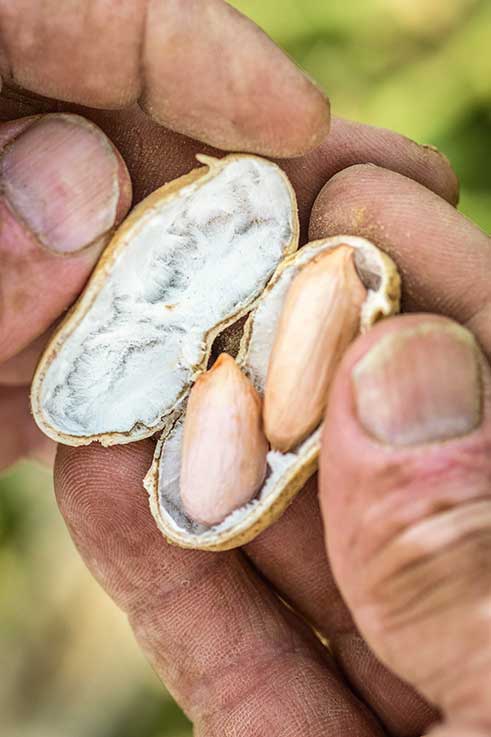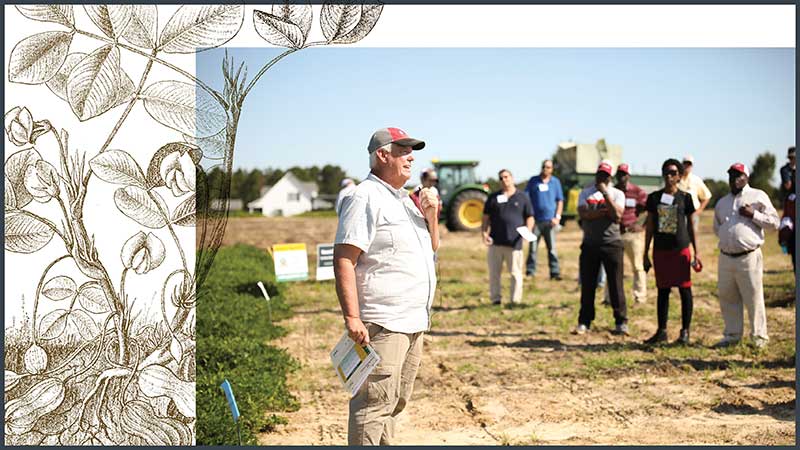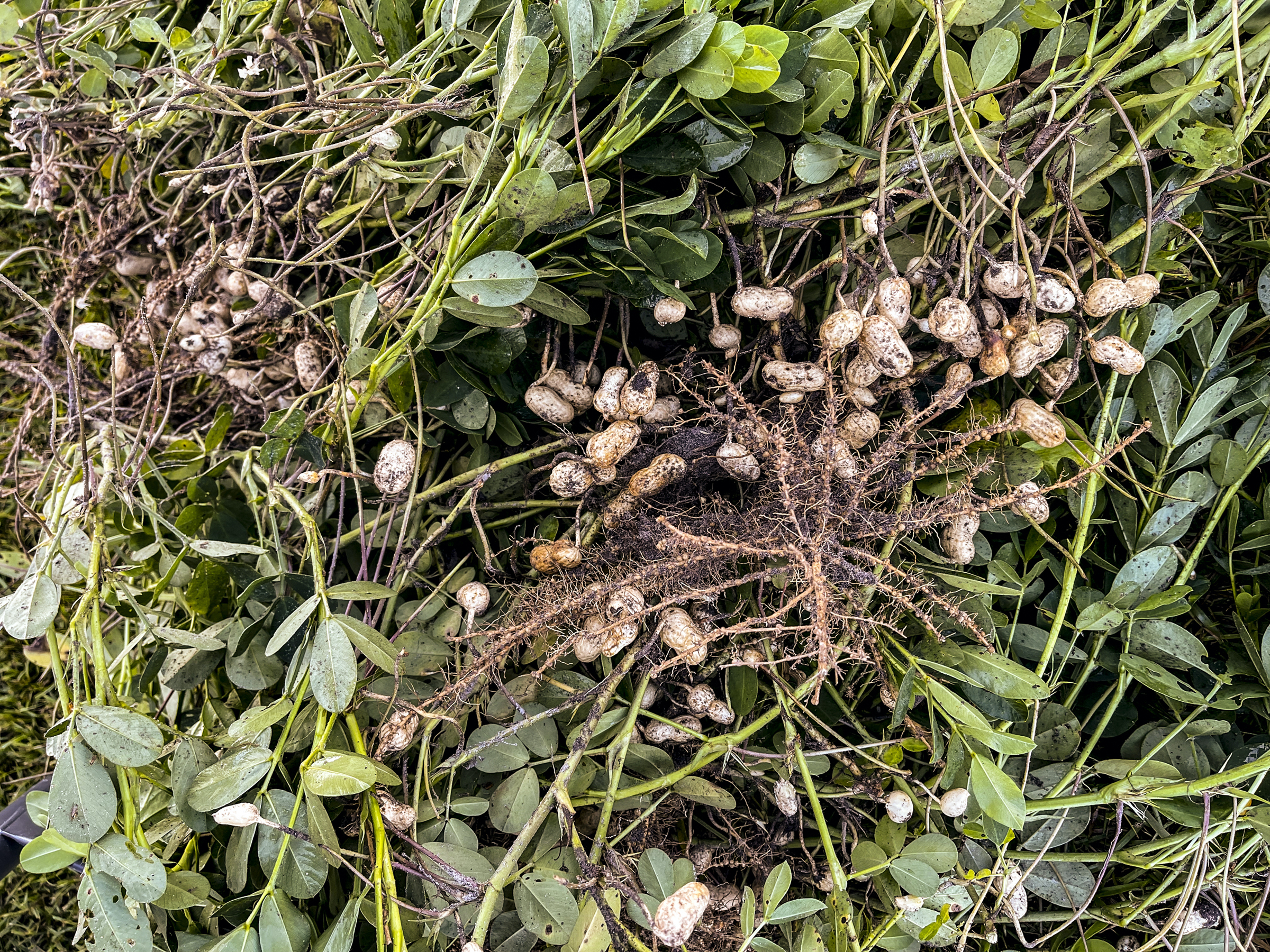PEANUT GENOME INITIATIVE BACKGROUND
Advancing Science and the Body of Knowledge
As a result of PGI research, 150 scientific papers have been published to date, with more in various stages of development. That number includes the landmark paper on genome sequences of the wild diploid parents of current cultivated peanut, published in the prestigious journal “Nature Genetics.” PGI funding helped to develop a website and database known as PeanutBase, which serves as the publically available site to store and utilize peanut genomic data. All PGI data is in the public domain and cannot be owned or patented by anyone. New sources of disease resistant germplasm have been found, and additional accessions of peanuts have been added to the USDA Peanut Germplasm Collection for breeders’ use. Techniques have been developed to move genes (and the resulting traits) from wild peanut species into cultivated peanut with more desirable agronomic characteristics.
Objectives and Early Findings
The PGI was born out of an industry-wide desire to tap advances in genomic technologies to enhance production and quality to assure long term sustainability of the industry. The peanut genome mapped by the PGI is of extraordinary quality, but in order to be useful in peanut breeding programs, large volumes of genomic data must be available in sophisticated on-line databases. The PGI-funded PeanutBase system provides an excellent platform for making peanut genome data publically available. The focus of the PGI has been to develop and apply new genomic technologies to peanut science, and specifically, to develop marker-assisted-selection (MAS) methodologies that lead to improved varieties for the marketplace.
Peanut proved to be a particularly difficult genome to study for several reasons, including the fact that the total genetic information in peanut is very large compared to other legumes such as soybeans, and approximately as large as the human genome. Also, like many domesticated crop plants, peanut’s genetic information is contained in twice the number of chromosomes compared to its wild relatives. Because of PGI research, we now know that modern day peanut is the result of a rare but natural combination of genomes from two wild peanut species. That event happened about 10,000 years ago in the foothills of the Andes Mountains in western Argentina.
The first step in understanding the genome of modern day tetraploid (meaning it has four sets of chromosomes) peanut was to understand the genomes of its two wild diploid (with two sets of chromosomes) parents. Researchers completed analysis of the two wild species genomes in a remarkably short time, which greatly facilitated the completion of the modern day peanut genome.
Speeding Breeding Programs
While mapping the peanut genome is a huge academic accomplishment in itself, support for breeding programs has always been the ultimate goal of the PGI. With the genome map now available, highly specific regions on that map (markers) can be discovered that confirm genes that confer specific traits. For example, PGI research has already discovered markers for high oleic oil chemistry and resistance to leafspot (early & late), root-knot nematodes and Tomato Spotted Wilt Virus (TSWV).
These high quality markers will allow breeders to quickly determine if their breeding lines contain certain traits and develop cultivars that better meet the specific (and diverse) needs of the industry. This breeding technique — known as marker-assisted selection (MAS) — allows breeders to make selections based on quick genetic tests rather than having to grow out hundreds of breeding lines to determine which ones have the desired trait. MAS does not result in genetically modified organisms (GMOs). The information generated in the PGI has already resulted in the registration of new cultivars (e.g., Tamrun, OL12, Schubert, NuMex-01, Olé, FloRunTM, Georgia 14N, and TifNV-HiO/L) as well as several varieties derived from wild species that can now be utilized in cultivated peanut breeding programs. Many more are sure to come.
This entire report is available on the Peanut Foundation website at www.peanutfoundation.org
Highlights of Research Accomplishments
PGI research highlights to date:
- The diploid wild parent species of todays’ cultivated peanut were sequenced and were utilized to construct the cultivated peanut genome in the proper molecular sequences and positions.
- The cultivated peanut has also been sequenced, and the assembly of the genome is 99.996% complete. HudsonAlpha says the genome is the best tetraploid genome ever assembled.
- Molecular markers have been developed from the sequencing data, which has led to the 2nd generation of a single nucleotide polymorphism (SNP) chip that is currently being utilized by breeders to evaluate breeding populations.
- Molecular markers for genes conveying resistance have been associated with late leaf spot, early leaf spot, white mold, TSWV, root knot nematode, and rust. Markers for high oleic oil chemistry have also been identified. Some of these are already being used in active breeding programs.
- Populations, for breeders use, have been developed with high levels of leaf spot resistance from wild species.
- Many genes have been identified that express traits at different developmental stages of growing peanut.
- Hybrid populations have been generated that contain an array of highly desirable characters for use by breeders to associate molecular markers with specific traits.
- Interspecific hybrid populations have been generated that are being used to introgress desirable genes from diploid peanut species into the cultivated genome.
- Peanut collections from all over the world are being genotyped to document the genetic diversity. Progress has been made in accessing the ICRISAT peanut germplasm collection in India.
- Thousands of different lines of peanut are being phenotyped for dozens of different traits. These phenotypes are being matched with genotypes which will help identify markers for even more desirable traits.
- PeanutBase, the on-line Breeders Toolbox, was developed and is widely used as a resource for genomic information and tools — as well as information about germplasm and the peanut community in general.
- The Peanut Foundation has sponsored Advances in Arachis Genomics and Biotechnology conferences, which have fostered international collaboration on peanut genomics.
International PGI, Executive Committee (July, 2017)
Members
Scott Jackson, UGA (Chair)
Peggy Ozias-Akins, UGA (Co-chair)
Corley Holbrook, USDA-ARS (Co-chair)
David Bertioli, U Brasila (Brazil)
Soraya Bertioli, EMBRAPA
Mark Burow, TAMU
Ethy Cannon, Iowa State Univ.
Steven Cannon, USDA-ARS
Kelly Chamberlin, USDA-ARS
Haile Desmae, ICRISAT-WCA
Ran Hovav, ARS TVC (Israel)
Andrew Farmer, NCGR
Lutz Froenicke, UC-Davis
Baozhu Guo, USDA-ARS
Sachiko Isobe, KDRI (Japan)
Boshou Liao, CAAS, (China)
Xin Liu, BGI
Richard Michelmore, UC-Davis
Victor Nwosu, MARS, Inc.
Brian Scheffler, USDA-ARS
Raymond Schnell, MARS, Inc.
Guillermo Seijo, IBN (Argentina)
Tom Stalker, NCSU
Barry Tillman, University Florida
Howard Valentine, TPF
Rajeev Varshney, ICRISAT (India)
Xingjun Wang, SAAS (China)
Richard Wilson, OBC
Graeme Wright (PCA (Australia)
Xingyou Zhang, HAAS (China)

